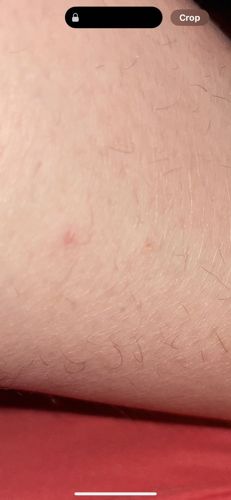Human Itch Mite
Scientific Name: Sarcoptes scabiei var. hominis
Order & Family: Order: Sarcoptiformes, Family: Sarcoptidae
Size: Adult female mites are approximately 0.3-0.45 mm long; males are about half that size. They are microscopic and typically not visible without magnification.

Natural Habitat
The primary habitat for the human itch mite is human skin, where it burrows into the stratum corneum (outermost layer of the epidermis). It is transmitted through direct, prolonged skin-to-skin contact with an infested person. Less commonly, it can be spread via infested bedding, clothing, or furniture.
Diet & Feeding
The human itch mite feeds on skin cells and tissue fluid within the burrows it creates.
Behavior Patterns
Human itch mites burrow into the upper layer of the skin where the female mite lays 2-3 eggs per day. Larvae hatch from the eggs in 3–4 days and mature into adults in 10–17 days. They are very small and typically not visible to the naked eye. The primary symptom of scabies is intense itching, especially at night, and a pimple-like rash. The mites can live for 1-2 months on a person. Off a person, they typically survive for 24-36 hours.
Risks & Benefits
Potential Risks: The primary risk is scabies, a highly contagious skin infestation causing intense itching and a rash. Secondary bacterial infections can occur from scratching. While uncomfortable, scabies is generally not life-threatening. There are no known benefits of the human itch mite.
Identified on: 9/4/2025